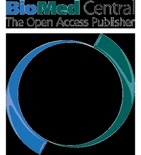
International Journal of Health Geographics
Scope & Guideline
Exploring the spatial dimensions of public health.
Introduction
Aims and Scopes
- Spatial Analysis of Health Outcomes:
The journal publishes research that employs spatial analysis to investigate health outcomes, such as the distribution of diseases, health behaviors, and risk factors across different geographic areas. - Environmental Health Studies:
A significant focus is on the relationship between environmental factors—such as air quality, greenspaces, and urban design—and health, exploring how these elements impact public health. - Inequalities and Disparities:
Research addressing health disparities related to socioeconomic status, geography, and access to healthcare services is prevalent, highlighting the social determinants of health. - Innovative Methodologies:
The journal emphasizes cutting-edge methodologies, including machine learning, remote sensing, and participatory mapping, to enhance the understanding of health geography. - Public Health Applications:
Research that translates geographic findings into public health applications, policy recommendations, and community interventions is a core component of the journal.
Trending and Emerging
- Impact of Urbanization on Health:
Recent studies are increasingly focusing on how urbanization influences health outcomes, examining factors such as urban greenspaces, air quality, and access to health services. - Geospatial Data Integration:
There is a growing trend towards integrating diverse geospatial data sources, including social media and mobile location data, to enhance the understanding of health behaviors and environments. - Climate Change and Health:
Research addressing the health impacts of climate change, particularly in relation to vector-borne diseases and environmental hazards, is gaining prominence, reflecting the urgent need to understand these connections. - Digital Health and Technology:
The use of digital health technologies, including virtual reality and machine learning, for health assessments and interventions is an emerging theme, showcasing innovation in health geography. - Community-Based Participatory Research:
There is an increasing emphasis on community engagement and participatory research methods, reflecting a shift towards more inclusive and locally relevant health geography practices.
Declining or Waning
- Traditional Epidemiological Studies:
There seems to be a waning interest in traditional epidemiological methodologies that do not incorporate spatial analysis or geographic information, as the field shifts towards more innovative and integrated approaches. - Basic Geographic Mapping:
Research that solely focuses on basic mapping techniques without integrating advanced spatial analysis or new technologies is becoming less common, as the field embraces more complex analyses. - Static Health Indicators:
The reliance on static health indicators without considering temporal changes or dynamic modeling appears to be declining, as researchers increasingly focus on spatiotemporal analyses.
Similar Journals
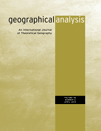
GEOGRAPHICAL ANALYSIS
Exploring the Depths of Earth-Surface ResearchGEOGRAPHICAL ANALYSIS, published by WILEY, is a premier scholarly journal that has been at the forefront of geographical and earth-surface research since its inception in 1969. With an ISSN of 0016-7363 and an E-ISSN of 1538-4632, this journal has established itself as an essential resource for researchers and professionals in the fields of Earth-Surface Processes and Geography, Planning and Development, achieving impressive rankings of 13th and 60th in their respective categories according to Scopus, placing it in the Q1 quartile for both. The journal is renowned for its rigorous peer-reviewed articles that contribute valuable insights into spatial analysis, environmental impacts, and urban planning, thus fostering a deeper understanding of geographical phenomena. With access options available through traditional subscriptions, GEOGRAPHICAL ANALYSIS continues to serve as a critical platform for the dissemination of cutting-edge research and innovative methodologies, ultimately shaping the future of geographical inquiry and application.
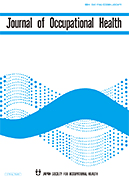
JOURNAL OF OCCUPATIONAL HEALTH
Pioneering insights into occupational health and safety.JOURNAL OF OCCUPATIONAL HEALTH, published by WILEY, serves as a vital platform for sharing research and advancements in the field of public health, with a specific focus on occupational health and safety. With an impact factor that underscores its significance—ranking in the Q2 category of Public Health, Environmental and Occupational Health—this journal has established a reputation for excellence, reflected by its position in the 76th percentile of its category according to Scopus. This Open Access journal, available since 2018, ensures that valuable research findings are accessible to a global audience, enhancing collaboration and innovation in addressing occupational health challenges. Covering a wide array of topics from workplace safety to the impacts of environmental factors on worker health, the JOURNAL OF OCCUPATIONAL HEALTH invites researchers, professionals, and students to contribute and engage with the latest developments in the field, thereby fostering a healthier work environment for all.
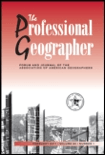
PROFESSIONAL GEOGRAPHER
Connecting Research, Professionals, and Students in GeographyPROFESSIONAL GEOGRAPHER is a prominent journal in the fields of geography and earth-surface processes, published by Routledge Journals, Taylor & Francis Ltd. With a rich history dating back to 1949 and continuing through 2024, it serves as a vital platform for researchers, professionals, and students to explore and disseminate groundbreaking research and insights within the geographical sciences. The journal holds a respectable impact factor, placing it in the Q2 quartile for both Earth-Surface Processes and Geography, Planning and Development as of 2023, highlighting its importance in these critical academic areas. The journal ranks #273 out of 821 in Geography and Planning and #70 out of 179 in Earth and Planetary Sciences on Scopus, reflecting its robust contribution to advancing knowledge in social sciences. Although it does not currently offer open access options, it still provides invaluable content that influences pedagogy and research in geography. Its comprehensive scope invites a wide range of geospatial topics, encouraging interdisciplinary dialogue and collaboration across the global academic community.
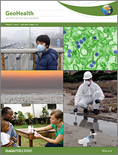
GeoHealth
Advancing Knowledge at the Intersection of Health and NatureGeoHealth is a premier open-access journal published by the American Geophysical Union, focusing on the intersection of environmental and health sciences. Launched in 2017, the journal has rapidly established itself with an impressive Q1 ranking in multiple categories, including Epidemiology, Global and Planetary Change, and Public Health, reflecting its commitment to high-quality research and impactful scholarship. Covering a broad spectrum of topics, GeoHealth provides a platform for scientific discussions on key issues such as health, environmental sustainability, pollution, and governance. With an accessible model, researchers and practitioners can freely share and access vital findings, significantly contributing to advancements in public health and environmental management. Exploring critical dimensions of health in relation to environmental changes, GeoHealth is essential reading for those seeking to understand and address contemporary challenges in health and environmental sectors.
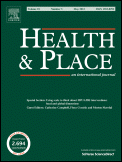
HEALTH & PLACE
Exploring the Nexus of Health and GeographyHEALTH & PLACE is a premier academic journal published by Elsevier Science Ltd, focusing on the intersection of health and geographical contexts. With an impressive impact factor and a Q1 classification across multiple categories including Geography, Health (Social Science), and Public Health, this journal serves as an essential platform for disseminating groundbreaking research and innovative insights into how place influences health outcomes. Established in 1995, HEALTH & PLACE offers a comprehensive view of contemporary health challenges through a social science lens, making it invaluable for researchers, practitioners, and policymakers alike. Although it operates under a traditional subscription model, the high visibility afforded by its ranking—elevating it to the top tier of its field—ensures that its rigorous peer-reviewed articles reach a wide audience. With a convergence of critical topics relevant to life-span studies and environmental health, the journal not only enriches academic discourse but also informs practical applications in public health initiatives.

Economics & Human Biology
Analyzing the Dynamics of Health Disparities and EconomicsEconomics & Human Biology, published by Elsevier, is a prestigious journal that serves as an interdisciplinary platform at the intersection of economics and health sciences. With ISSN 1570-677X and E-ISSN 1873-6130, this journal analyzes the implications of economic factors on human health and biological outcomes. As a recognized leader in its field, it has earned a remarkable Q1 ranking in both the Economics, Econometrics and Finance (miscellaneous) and Health (social science) categories for 2023, reflecting its significant impact within the academic community, as evidenced by its Scopus rank of 88 out of 371 and a 76th percentile ranking in Health social sciences. Highlighting key issues such as health disparities, economic policy impacts on health, and the biological determinants of economic behavior, the journal encourages innovative research that bridges these critical domains. Researchers, professionals, and students seeking to contribute to or stay informed on emerging trends in health economics will find this journal an invaluable resource. Explore the latest findings and engage with a community dedicated to advancing our understanding of the interplay between economics and human biology.

Health Equity
Driving impactful change in health systems worldwide.Health Equity is an esteemed open-access journal published by MARY ANN LIEBERT, INC, dedicated to advancing knowledge in the fields of health information management, health policy, and public health. With an E-ISSN of 2473-1242 and a commendable Q1 ranking in multiple categories for 2023, including Health Information Management and Health Policy, this journal stands at the forefront of addressing the complexities of health disparities and promoting equitable healthcare solutions. By providing a platform for original research, critical reviews, and innovative methodologies since its inception in 2017, Health Equity plays a crucial role in facilitating dialogue among scholars, practitioners, and policymakers. The journal's commitment to open access ensures that its valuable content is freely available, fostering collaboration and knowledge dissemination within the global health community. As it converges from 2017 to 2024, Health Equity continues to empower its readership to drive impactful changes in health systems and policies worldwide.

Annals of Global Health
Illuminating critical health issues on a global scale.Annals of Global Health is a distinguished open-access journal published by UBIQUITY PRESS LTD in the United States, dedicated to advancing research and dialogue in the field of global health. Since its inception in 2014, the journal has played a pivotal role in disseminating knowledge that spans diverse health topics, fostering collaboration among healthcare professionals, researchers, and policymakers worldwide. With an impressive impact factor and ranking in the top quartile (Q2) of the Medicine (miscellaneous) category, the journal is recognized for its contributions to the medical community, currently placing it at rank #91 out of 636 in General Medicine, with a notable percentile of 85. The Annals of Global Health is committed to ensuring that research is accessible to all, offering open access options for its extensive range of articles. As it converges its years of operation from 2014 to 2024, the journal aims to continue highlighting critical health issues, innovative interventions, and global health policies that shape the future of public health.
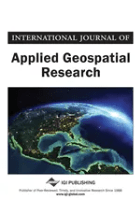
International Journal of Applied Geospatial Research
Driving insights in Earth and planetary sciences.International Journal of Applied Geospatial Research is an esteemed publication dedicated to advancing the field of geospatial research. Published by IGI Global, this journal provides a platform for innovative studies from 2010 to 2024 that encourage multidisciplinary contributions across Earth and planetary sciences and geography. While currently not offering open access, the journal's focus on applied research ensures that it remains highly relevant to both academics and industry professionals alike. With an ISSN of 1947-9654 and an E-ISSN of 1947-9662, it has been indexed in various databases, reflecting its emerging significance with rankings such as Q4 in Earth and Planetary Sciences and Geography according to Scopus, placing it at the intersection of critical research and practical application. Researchers, professionals, and students can expect insightful articles that enhance understanding and drive innovation in geospatial applications essential for informed decision-making in a rapidly changing world.
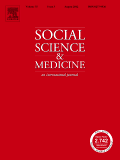
SOCIAL SCIENCE & MEDICINE
Illuminating the Socio-Political Factors Influencing HealthSOCIAL SCIENCE & MEDICINE, published by Pergamon-Elsevier Science Ltd, is a premier international journal dedicated to advancing knowledge in the interconnected realms of social sciences and medicine. With an impressive impact factor and categorized in the Q1 quartile across Health (social science), History and Philosophy of Science, and Miscellaneous Medicine, this journal is instrumental for researchers and practitioners striving to understand the social dynamics impacting health and well-being. Since its inception in 1967, the journal has maintained rigorous scholarly standards, providing a platform for innovative research, critical reviews, and interdisciplinary collaboration. By focusing on the socio-political determinants of health, it serves as a valuable resource for academics, professionals, and students alike, fostering a holistic understanding of health-related issues in contemporary society. Access options are tailored for a wide audience, ensuring the dissemination of essential findings and insights to aid in policy-making, healthcare practice, and public health initiatives.